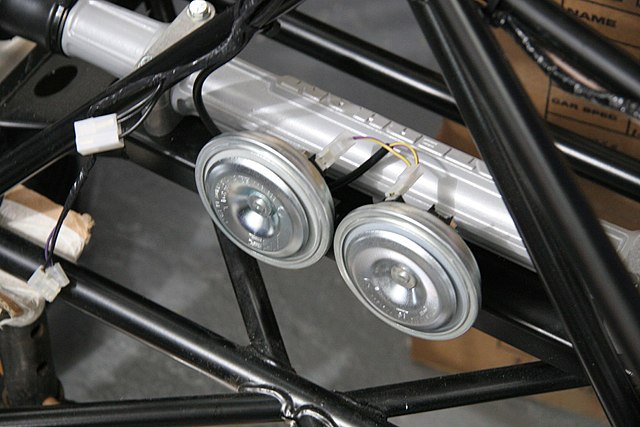A vehicle horn is a sound-making device installed on motor vehicles, trains, boats, and other types of vehicles. The sound it makes usually resembles a “honk” or a “beep”. The driver uses the horn to warn people of danger. The horn is activated to warn others of the vehicle's presence or approach, or to call attention to some hazard. Motor vehicles, ships and trains are required by law in some countries to have horns. Trams, trollies, streetcars, and even bicycles are also legally required to have an audible warning device in many areas.
The single reed bulb horn was popular on early automobiles.
Horn of Rolls-Royce Phantom I Open Tourer Windovers (1926)
Modern electric horns mounted in engine compartment
The Leslie S5T, a locomotive air horn with five 'chimes'
An air horn is a pneumatic device designed to create an extremely loud noise for signaling purposes. It usually consists of a source which produces compressed air, which passes into a horn through a reed or diaphragm. The stream of air causes the reed or diaphragm to vibrate, creating sound waves, then the horn amplifies the sound making it louder. Air horns are widely employed as vehicle horns, installed on large buses, semi-trailer trucks, fire trucks, trains, and some ambulances as a warning device, and on ships as a signaling device.
Steam whistle from a supertanker, in Merseyside Maritime Museum, United Kingdom
Diagram of a typical locomotive air horn power chamber, showing operation
Leslie model S5T five-chime locomotive air horn.
A small portable air horn used for sporting events, boating, or safety, powered by a can of compressed gas. It is operated by pressing a button on the top.







